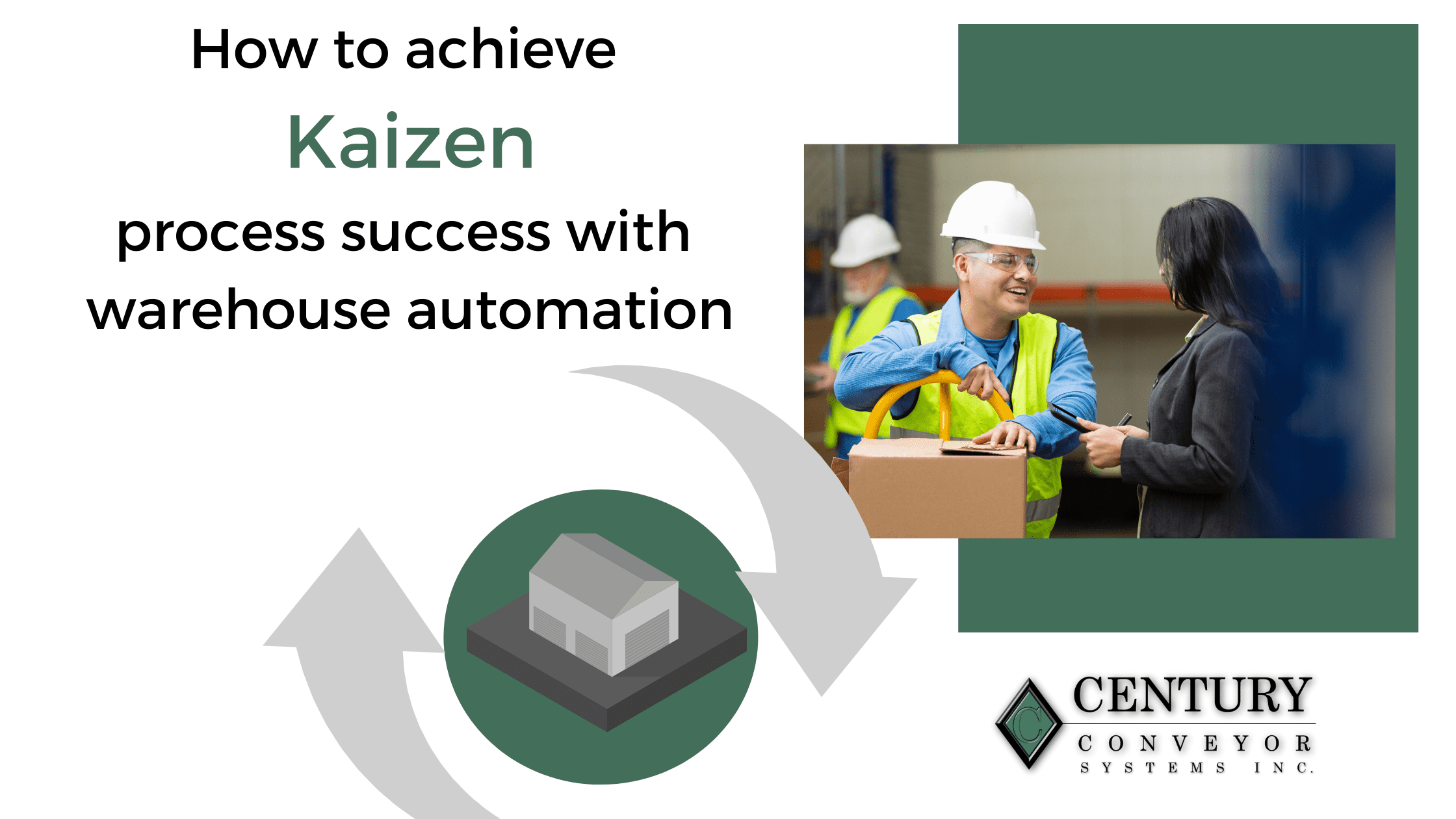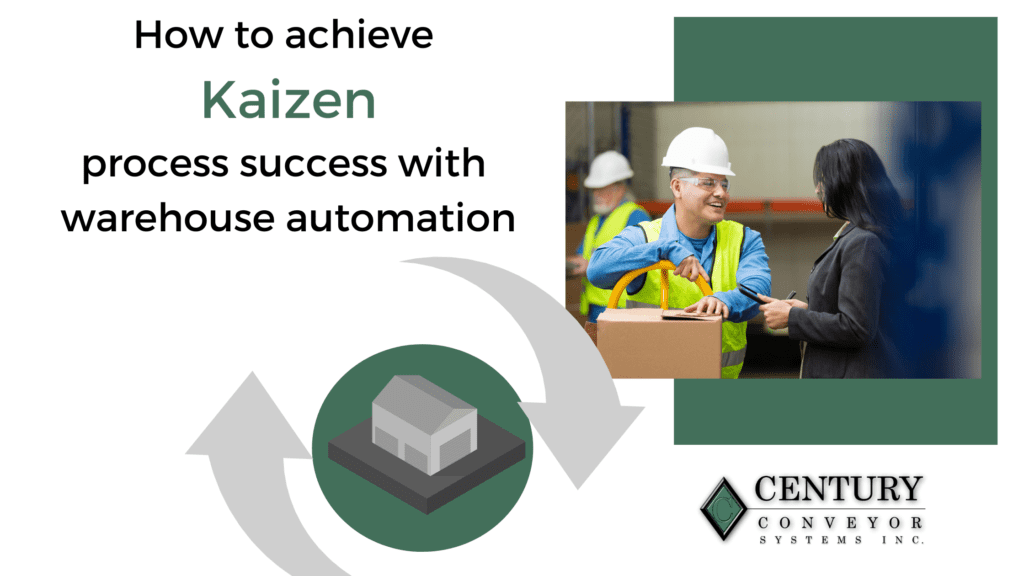
Kaizen (translated roughly from Japanese for “improvement”) is a lean operating methodology that provides continuous improvement by scrutinizing specific inefficiencies and accurately solving them. Typically, Kaizen steps follow the guidelines below:
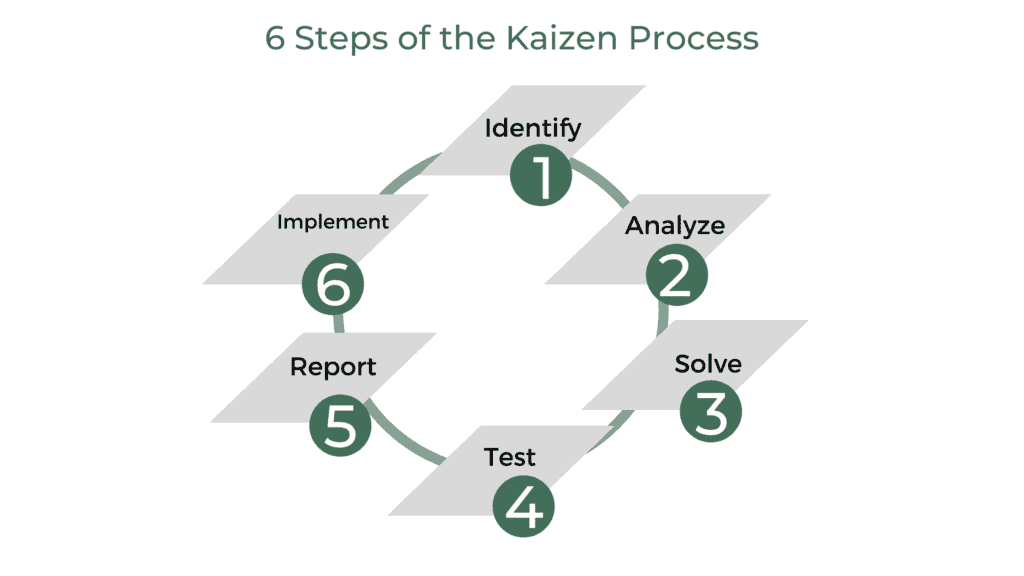
- Identify
Recognize and indicate sub-optimal processes
- Analyze
Research into why the process is not working optimally
- Solve
Generate possible solutions to eliminate the inefficiency
- Test
Thoroughly test possible solutions
- Report
Collect data and determine if test results display a positive outcome
- Implement
Act on results and integrate the tested solution
Kaizen methodology thrives on the idea of collaboration and precise measurements. For a warehouse to be operating to the best of its abilities- insights, direction, and data must be gleaned from the employee team, from the chief executive officer, all the way down to a warehouse worker. Understanding and utilizing the data from such varied viewpoints can provide valuable information as to what’s working, and what’s not. This combination ensures that the proposed solution performs well on every level, and is the result of both executive leadership, and hands-on experience.
When considering improvements consistent with kaizen practices, automation is a powerful tool that can solve those points of waste in your warehouse. Typically, kaizen is predominantly used in manufacturing operations, but the same principles apply to downstream, post-production operations like goods-to-person, pick-to-light, storage and retrieval, order fulfillment, and sortation- just to name a few EOL processes.
Inefficiencies exist in these processes too, and we’ve put together our recommendation on which automated systems fulfill kaizen standards for common warehouse waste.
Identifying warehouse waste
Identifying the source of inefficiency in your facility may be extremely simple or hidden enough that you’re not even aware of it.
An obvious source may be something like an old conveyor system that jams constantly, lack of available storage space, or multiple forklifts with not enough employees to operate them.
Hidden waste sources are harder to discover, and may not be something that can be corrected without data reporting software. A warehouse management system (or WMS), connected to any warehouse control system (WCS) can provide a wealth of incredibly detailed analytics and reports. Here is where you can pinpoint underperforming sections of your process, simply by reviewing system rates.
Before any extensive kaizen changes are implemented, a WMS is key to fully understanding the existing conditions of your warehouse and receiving hard empirical data as to if your improvements are, well, actually improving anything.
Losing track of items
As well as generating valuable system reports, a WMS can manage and maintain your inventory levels, important for any company, and crucial for any warehouse that handles a catalog of SKUs. Proper product tracking means less time spent searching and more time spent understanding the ebb and flow of product demand in your warehouse, which can help guide decisions on inventory forecasting and scaling.
Keeping track of product with Excel charts won’t cut it. The benefits of dynamically managing your warehouse inventory outweigh the costs of implementing a WMS platform, which, when compared to other automation solutions, isn’t as expensive or as difficult to integrate.
Manual product movement
Consider all the operations in your warehouse currently that include your workers physically transporting items to the next step in the process. Touchpoints, as we’ll call them, should be minimized. Essentially, automation can assist in lowering the number of touchpoints in your warehouse, if not completely eliminating some.
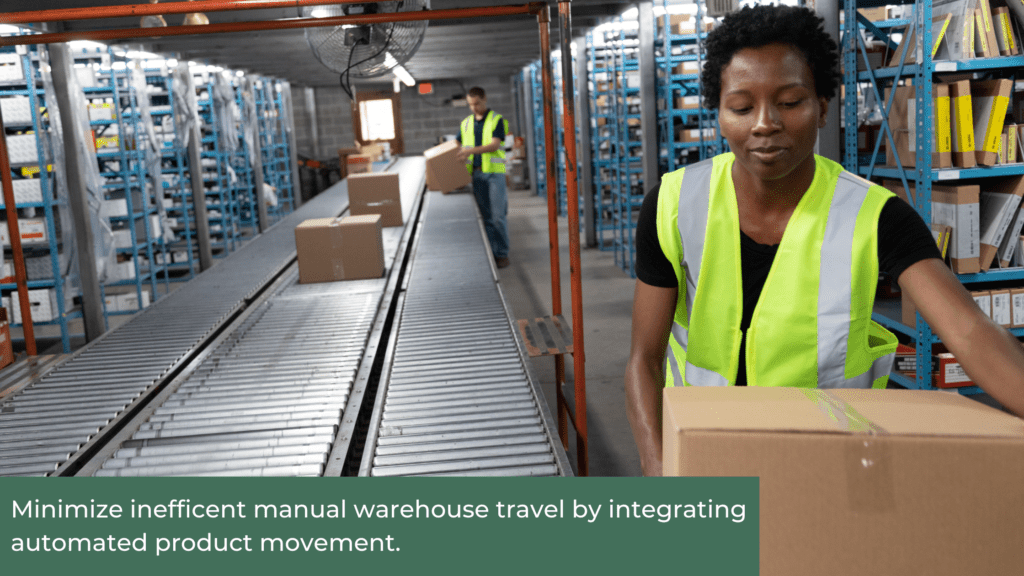
The addition of a single conveyor line connecting in-feeding and out-feeding operations can lower worker touchpoints exponentially simply by eliminating the need for employees to transport product themselves.
Warehouse robots, like AGVs and AMRs can move product throughout a facility without an employee actively operating it, unlike a forklift or a cart.
Automation can be integrated as a compliment to manual operations. It’s understandable that not every facility has the budget, or the demand, to automate every operation fully, but having employees run a marathon when they need to pick an item is certainly a source of inefficiency.
Inconsistent product flow
Maintaining a congruent movement of products may seem like a no-brainer at first thought but consider every step of your warehouse process. Are there constant slowdowns and jams? Do you notice many employees waiting with no work to do? How come that pallet isn’t built yet?
Any mishap is much like a domino effect. It’s important to understand that a single area of inefficiency can affect whatever is downstream from it. Consider the timing for each product that’s processed and identify where it’s falling short.
Going back to the palletizing sample, your cartons may be outputting at a fantastic rate, but if your employees cannot build and stretch wrap pallets without a mass of boxes piling up, something needs to be adjusted (like an automatic palletizer, or an additional conveyor line). You may also be looking for the solution in the wrong area. Widen your lens and research how operations upstream can be fine-tuned to avoid errors down the line.
At Century, we engineer systems from start to finish, inclusive of a consistent CPM rate. Our goal is to offer you the best ROI and output rate across the entire solution. This takes a good amount of innovation and ingenuity, but we pride ourselves on being able to offer a specialized design that works just for you. We’d love to hear your challenges and offer our opinions on solutions.
Recurring downtime
System and equipment maintenance should be part of your warehouse’s normal operating routine. The waste appears when the amount of downtime becomes much too excessive.
In our experience, most powered equipment has a lifespan of around 25 years. For something that gets heavy-duty usage, that’s nothing to scoff at, but it’s important to realize when a machine is nearing the end of its duty.
In famous kaizen form, speak with your maintenance team or warehouse supervisor and gather their feedback on which systems are experiencing faults, the age of the systems, and what their ideas are for upgrades. They will have an intimate working knowledge of the warehouse floor and can provide valuable direction.
Downtime may not just simply be something breaking, but an inefficiency created in response to potential downtime, or a temporary band-aid solution. For example, a dock door that has been damaged and cannot be opened, and instead of repairing it, that door is just not used- opting to leave the excess to the other bays.
Difficulty training and retaining staff
A common source of frustration and difficulty for any warehouse, and even more so during current labor shortages, maintaining skilled facility staff is a constant source of improvement.
In terms of automation, any solution that replaces a manual operation will improve the performance of that specific function immensely. After the initial investment, daily utilization costs of the automation solution will be far less than those associated with an employee. The output and efficiency benefits will far outpace those done via manually.
Again, it may not be financially and practically viable to automate every function, so empowering employees with simple-to-use warehouse devices and properly training workers on how to operate systems is a promising path in cultivating skilled workers. Employees feel valued and important the more responsibility they are given and see the fruits of their labor by learning to operate, and work with, automation systems.
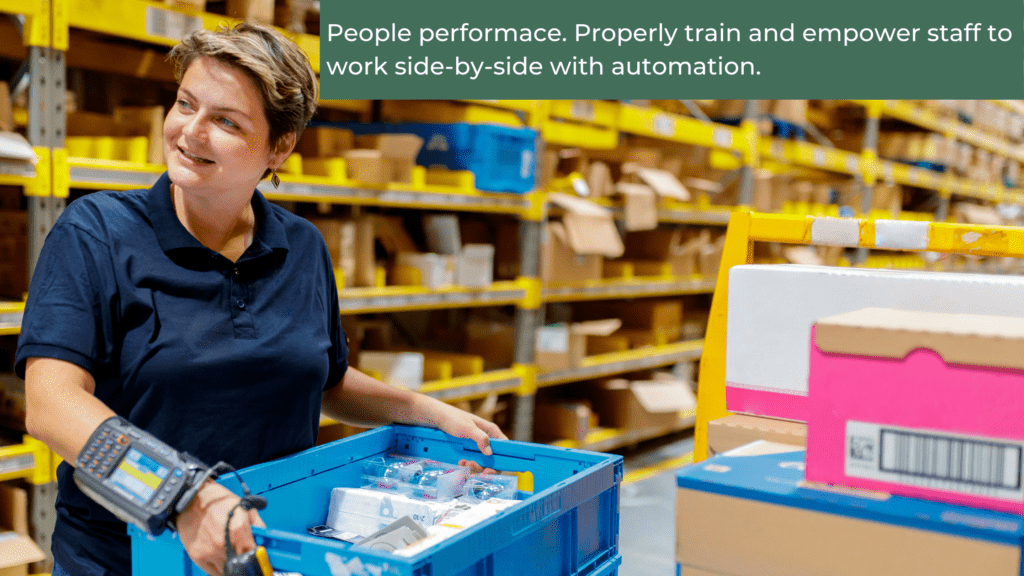
Kaizen operates the best on the notion that communication, teamwork, and a clear upward trajectory are present and practiced. If you’re having labor troubles at your warehouse, implementation of automation will absolutely help, but proper training and empowering workers can motivate them to work better and stick around longer.
Poor usage of warehouse space
The most precious amenity in any warehouse is space. It’s vitally important to carefully place structures, systems, and walkways in a design that’s maximizing the space that it’s given, keeping future expansions in mind. Spaces that are not optimized are only hurting performance, and greatly limiting growth.
Space-saving automation solutions can be done directly with that notion in mind or as an added result of another solution integration. For example, installing a team of AGVs to transport packages can do away with bulky, manually operated forklifts
For a direct answer to your space-saving needs, a myriad of warehouse structure systems like an ASRS, robotic shuttle, or thin-aisle racking (just to name a few) are designed specifically to save space and increase output.
While these systems are powerful, it may not be viable for your warehouse to implement hem. Instead, consider the verticality of your warehouse. The space above you can certainly be utilized provided your warehouse can accommodate. Mezzanines and elevated conveyor systems can free up ground-floor space, leaving much more room to install additional systems.
Obsolete or underperforming equipment
Much like our previous point on downtime, older systems and equipment can impede optimal performance. It can certainly be the cause of the reliability of the system or the technology used is just outdated and essentially obsolete. Material handling technology is in a constant state of evolution, as more advanced developments are integrated. A conveyor system from 20 years ago, while still of the same basic design, is very much different from a modern-day one.
To give a general example, 5G connectivity adaption within warehouses is quickly being adopted, yet, many companies still have legacy systems that run on 3G. The difference is stagging, comparing the speeds of 3G networks (2 Mbps) vs 5G (up to 1 Gbps), and with the advent of IIoT (industrial internet of things), 3G is simply a fossil.
Apply the same perspective on any technical system or solution, and you’ll see much the same difference in the vastness of ability. Consider evaluating any aging equipment in your warehouse, and research the advancements it’s undergone over the years.
Where do I start?
Every warehouse and distribution facility is different, and each comes with its own set of unique challenges. Because of this, the mileage may vary, but correctly identifying pain points should never be a one-sided decision. Kaizen depends on teamwork, and having an intimate understanding of how your warehouse operates on a day-to-day basis means opening lines of communication between departments, and cultivating an environment where employees feel like their feedback is valued and important.
Follow the steps, identify carefully and accurately, and consider how automation can help you dispose of ineffective warehouse waste.



